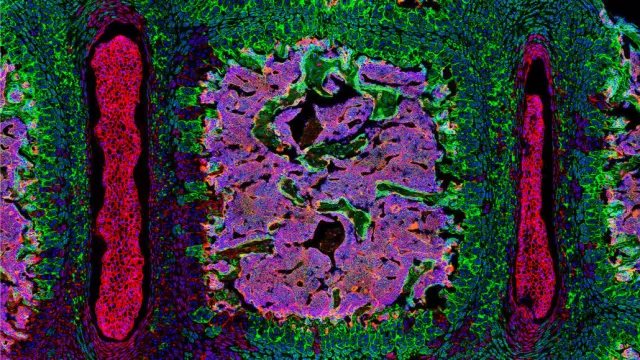Breakthrough Discovery: Novel Stem Cells Attract Breast Cancer to the Spine
Oct 14, 2023
Breast cancer often metastasizes to the spine, and recent research may have unraveled the fundamental mechanism behind this phenomenon.

Breast cancer often metastasizes to the spine, and recent research may have unraveled the fundamental mechanism behind this phenomenon.
In a study published in the journal Nature on September 13, pathologist Matthew Greenblatt and his team at Weill Cornell Medicine in New York City have shed light on a previously perplexing aspect of metastasis. They've unveiled the crucial role of a unique type of stem cell in attracting cancer cells to the vertebrae.
Xiang Zhang, a cancer biologist at Baylor College of Medicine in Houston commends this breakthrough as a significant step toward understanding bone metastasis.
Among patients with metastatic breast cancer, approximately 70 percent go on to develop bone cancer. Interestingly, cancer cells display a distinct preference for the vertebrae, making spine metastases a common and dreaded complication. Tumors that establish themselves in the spine can exert pressure on the spinal cord, which houses essential nerve bundles responsible for sensory perception and mobility. Such damage can significantly hinder a person's capacity to walk, manage bodily functions, and even reduce their lifespan.
The medical community has long recognized the propensity of certain cancers to target the spine. However, a convincing explanation has remained elusive. An outdated theory from 1940, suggesting that actions like coughing divert blood flow and somehow guide cancerous cells to the vertebrae, still persists. Greenblatt, during his medical studies, encountered this theory but found it lacking in scientific merit.
However, the role of stem cells offers a more rational explanation. The researchers suspected that stem cells within vertebral bones differed from those found in other parts of the skeleton, such as the long bones in the arms and legs. Laboratory experiments validated their suspicions. Stem cells derived from the vertebrae of mice exhibited distinct characteristics compared to those from long bones. These newly identified stem cells activated a unique set of genes and displayed distinct behaviors.
Before this discovery, scientists operated under the assumption that both types of bones contained identical stem cell populations. Geert Carmeliet, a cell and molecular endocrinologist at KU Leuven in Belgium, who was not part of the study but provided commentary, acknowledged the significance of this revelation. It suggested the potential involvement of spinal stem cells in the development of spinal disorders.
In a crucial experiment, Greenblatt's team transplanted spinal stem cells into one hind leg of mice and long bone stem cells into the other. Each transplant resulted in the formation of miniature bones or organoids within the animals' bodies, yielding a small vertebra on one side and a fragment of a long bone on the other. Subsequently, they injected breast cancer cells into the mice to observe their destinations.
The cancer cells displayed an almost twofold preference for migrating to the miniature vertebra, indicating that an unidentified factor was attracting them to the vertebra. According to Carmeliet, this elegantly demonstrated that "tumor cells preferentially home in on the [vertebra] organoid rather than the organoid of the long bone."
The newly identified spinal stem cells, found in both mice and humans, were observed to secrete a protein called MFGE8, which serves as a tumor attractant, drawing cancer cells toward spinal tissue. While MFGE8 may not be the sole factor at play, Greenblatt contends that it plays a significant role in directing tumor cells towards the spine.
The potential to block MFGE8 as a strategy to prevent or treat spine metastasis appears promising, but comprehensive investigation is required to fully comprehend the therapeutic implications, as cautioned by Zhang.
Greenblatt's team is now exploring whether these newly discovered stem cells can also attract other types of tumor cells to the spine. For instance, when prostate cancer spreads, it exhibits a similar affinity for vertebrae over other bone types. The researchers are also delving into the possibility of discovering additional undiscovered stem cells within the skeletal system.
